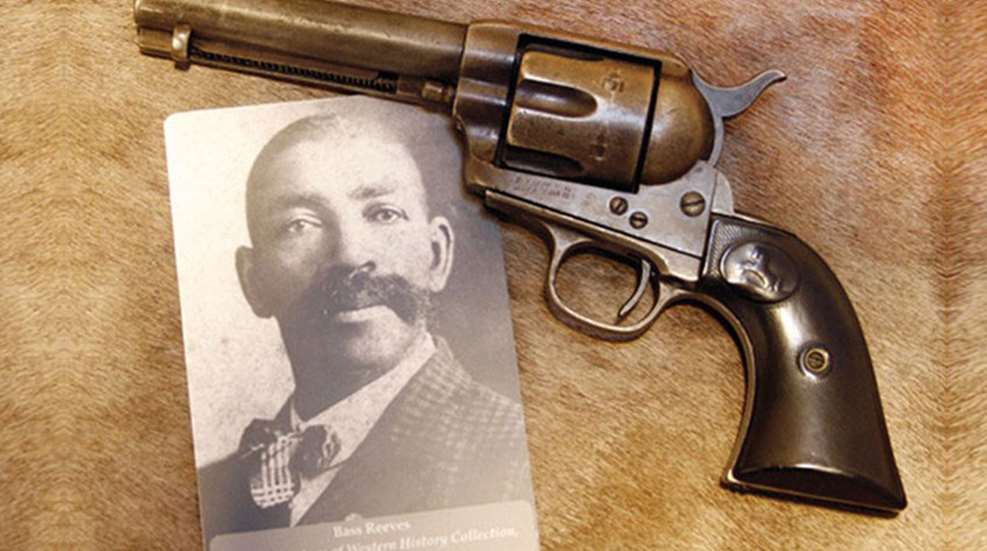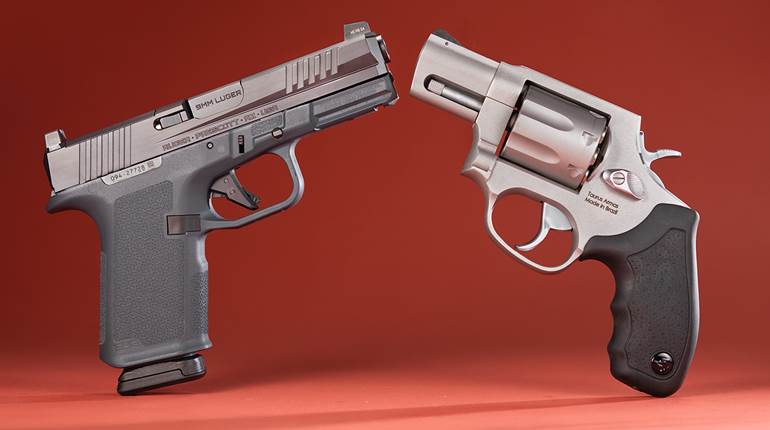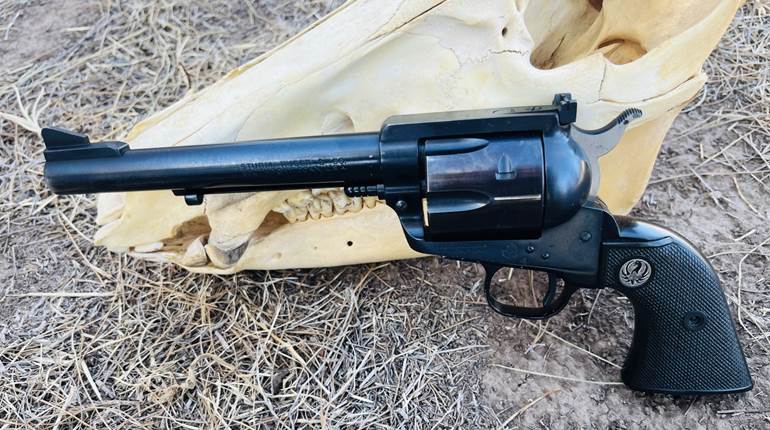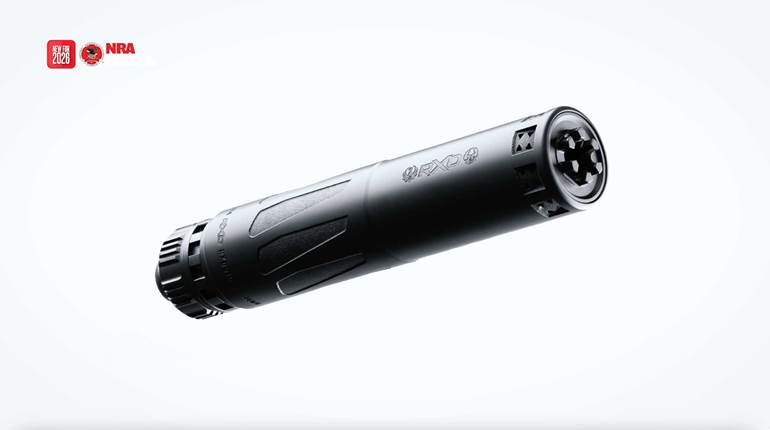
The area that we know today as the state of Oklahoma was called Indian Territory back in the 1800s. It was land that Congress had set aside to be the new homelands of the Cherokee, Chickasaw, Choctaw, Creek and Seminole nations. And it was set up to be only the home of the indigenous people. That quickly fell apart because it also became a sanctuary for runaway slaves and a home for many Anglos who circumvented the law by marrying local women. The area also became a haven for bootleggers, horse thieves and outlaw bands that took advantage of a vast territory with very little law enforcement.
By federal statute, the various tribal nations had their own police forces, but those could only enforce the law among their own people. The real burden of policing Indian Territory fell to the United States Marshal at Fort Smith, Ark. Through his appointed deputy marshals, he brought lawbreakers to justice in the courtroom of the famous Judge Isaac C. Parker, who wielded the federal gavel from 1875 to 1896. During his tenure, Judge Parker heard nearly 14,000 cases of which some 344 were capital offenses. He also oversaw 79 legal hangings. In all, the deputy U.S. marshals patrolled an area of 75,000 square miles. And, during that time, between 75 and 100 deputy marshals were killed in the line of duty. It was a harsh land that required tough lawmen.
One of the most interesting was an African-American and former slave named Bass Reeves (1838-1910). Reeves was born into slavery in the state of Arkansas and, as a child, was moved to northeast Texas. During the War Between the States, Reeves was made to follow and serve his master who was fighting for the Confederacy. During the war, however, Reeves managed to escape, and is believed to have taken refuge in the Indian Territory where he was treated as a free man and began to learn the languages of the various tribes. Reeves also became adept with firearms and learned to hunt and track. All of those skills would become valuable in his chosen profession.
By 1875, Reeves and his family were living back in western Arkansas, and it was there that he was approached to apply for a position as a deputy U.S. marshal. Bass Reeves was one of the first, if not the first, African-American to hold a federal law enforcement position.
In those days before formal law enforcement training, the newly appointed deputy marshals went out under the supervision of a more experienced lawman and got their training in the field. They were usually accompanied by a cook who drove a wagon used to carry gear and haul prisoners, and one or more possemen who were hired by the job to assist the deputies. With a handful of federal warrants, the officers would head west into Indian Territory and search out the wanted criminals.
With time, Bass Reeves was experienced enough to be allowed to command his own wagon and work on his own. Interestingly enough, Reeves never learned to read and write. But he developed a method of memorizing and organizing his warrants so that he knew exactly which one matched up with which outlaw. A friendly and easy-going man, Reeves also made friends along the way who would write up the reports that he dictated and send them in to Fort Smith. It is estimated that Bass Reeves arrested more than 3,000 felons during his career, and he may have been forced to kill as many as 14 outlaws.
Bass Reeves, like most of the other deputy marshals, is known to have carried two handguns when he was out on patrol and serving warrants in Indian Territory. Some wore their guns on the same cartridge belt, while others would hide one of the guns under their coat in a shoulder holster or other concealment rig. They, of course, did not wear two revolvers so that they could fire a gun in each hand as was seen in the old western movies of the last century. Instead, the second handgun was there so that they did not have to go through the slow, laborious business of reloading during a gunfight.
In point of fact, though, most of the deputy marshals did their fighting with rifles whenever possible because of the extra accuracy and power they offered. Some, like Reeves, preferred to use rifles such as the Winchester Models 1873 and 1892 because they were chambered for handgun cartridges, with the .38-40 Win. and .44-40 Win. cartridges being most popular. Other Indian Territory lawmen chose rifles such as the Winchester Models 1876 and 1886, chambered in .45-70 Gov’t and other powerful cartridges of the day.
Mounted and ready to go, the deputy marshals generally wore one cartridge belt that carried their handguns and another cartridge belt if their rifle was chambered for a different caliber. Their rifle was carried in a scabbard on one side of the horse, and a shotgun was often in a scabbard on the other side. Another cartridge belt, holding shotgun shells, was often looped over the saddle horn. Working in remote territory, miles from supplies and any backup, the deputy marshals had to be prepared for whatever came their way while chasing outlaws.
Like most of the other deputy marshals, Reeves preferred to use Colt revolvers, specifically the Single Action Army, and Winchester rifles. At certain times during his career, Reeves used a pair of Peacemakers in .45 Colt. However, he ultimately switched over to the same guns in .38-40 Win. and .44-40 Win. so that the cartridges would interchange in the Winchester rifles that he used.
Currently on loan to the NRA National Sporting Arms Museum at the Bass Pro Shop in Springfield, Mo., is a Colt Single Action Army in .32-20 Win., that belonged to Reeves and was donated by his great nephew. The revolver has a 4¾" barrel and black hard-rubber stocks that have been worn smooth. Colt records show that the gun was shipped in 1895 to Simmons Hardware in St. Louis, Mo.
Now a .32-20 Win. sixgun is a bit light in caliber for Bass Reeves to have carried on law enforcement assignments, and, for that reason, it is believed that the gun may be one that he confiscated from one of the many felons that he arrested during his career. We can only wish we knew the whole story behind the Colt as it is undoubtedly an interesting one.
Bass Reeves was described by family and friends as being 6', 2" tall and weighing about 180 lbs. With his friendly nature and intelligence, Reeves was often able to bring wanted men in without incident. Unfortunately, as in the life of most career lawmen, that was not always the case.
In 1883, in the Chickasaw Nation, a ranch foreman named Jim Webb shot and killed a black preacher who lived as a neighbor to the ranch. In due time, Reeves rode up to the ranch with a warrant in his pocket and a posseman by his side. Since Webb was known to be hot-tempered and dangerous, Reeves and the posseman passed themselves off as cowboys looking for a place to get a meal and rest their horses.
After their meal, Reeves and his posseman made up a plan for Bass to jump Jim Webb while the posseman took hold of Frank Smith, one of the ranchhands who was shadowing them. At the appointed time, Reeves grabbed Webb and disarmed him only to look around and see that the posseman was frozen with fear and that Frank Smith was going for his gun. With one arm around Webb, Reeves turned toward Smith as the cowboy snapped off two shots from his pistol and missed both times. Reeves fired one shot from his .45 Colt in return and did not miss. Smith was buried and Jim Webb was locked up at Fort Smith.
In time, Jim Webb was allowed to post bail and was freed pending his trial for murder. And, as often happens, when time for the trial came around, everyone showed up except for Jim Webb. Accordingly, new warrants were issued and Bass Reeves was once again back on his trail.
Eventually, Reeves received word that Jim Webb was hanging around a certain store near present-day Woodford, Okla. As Reeves rode up to the store, Webb jumped out a window and made a run for his horse, which was tied in the trees some distance from the building. At a gallop, Reeves was able to get between Webb and the horse, at which point Webb started shooting at the deputy marshal with his Winchester. One of the bullets hit Reeves’ saddle horn, another cut a button off the marshal’s coat, while a third shot severed the bridle reins. Hitting the ground on his feet, Reeves quickly went to work with his own Winchester (probably a Model 1873) and put two bullets into the outlaw’s chest. As a result, there was a funeral instead of a trial.
In 1884, Reeves was holding warrants for two horse thieves, Frank Buck and John Bruner. While on patrol, Reeves met the pair along the trail and, since they did not know that Reeves held warrants, the trio rode along together. When they stopped for a noon rest, Reeves realized that the outlaws were getting suspicious of him. Easing over to his horse, as if to tend to him, Reeves was able to get close enough to John Bruner to snatch the man’s gun from its holster. At the same time, however, Reeves saw Frank Buck drawing his own gun. With a quick draw and shot from his .45 Colt, Reeves killed Buck. It was another case of one man being buried and the other being placed in the federal jail.
One of the most bizarre episodes in Reeves’ life came in 1887, when he killed his own camp cook while they were out on patrol. Several tales have been told about this death and, at this late date, it is difficult to determine the true facts. One story claims that the two men argued over the cook’s abuse of a stray dog that had been traveling along with them. According to that tale, the cook supposedly poured hot grease on the dog and was shot by Reeves for his abuse of the animal.
Another explanation of the killing was that Reeves was sitting in camp, working on his rifle, when the gun discharged, the bullet hitting the cook in the neck. Regardless of the actual facts, Reeves did everything he could to get the cook to medical attention, which, unfortunately, came too late.
The upshot of the episode is that Reeves was charged and tried for murder in Judge Parker’s court, and he was acquitted of all wrongdoing. On top of that, Judge Parker saw to it that Reeves was put back to work as a deputy U.S. marshal.
By the 1890s, other federal districts began to take some of the work load off of Judge Parker’s court at Fort Smith. In 1893, Reeves was reassigned to work out of the federal court at Paris, Texas. And, in 1897, he transferred to the federal court at Muskogee, Indian Territory.
While working out of the Muskogee court, one of the most tragic events in Reeves’ long career occurred. One of Reeves’ sons shot and killed his wife during a domestic dispute, possibly arising over infidelity. Bass was gone at the time but, upon returning home and hearing the news, he went straight to the U.S. Marshal and requested that he be allowed to serve the warrant. The marshal, trying to spare Reeves’ feelings, said he would have another deputy take care of the matter. Reeves, however, insisted that it was his son and that he would see that he was properly arrested.
Reeves, warrant in hand, headed out into the Territory in search of the fugitive. Within a few days, Reeves returned with his son and placed him in jail. In due time, the son was convicted and sent off to federal prison to serve his time. Family history says that the son, upon his release from prison, became a solid citizen and lived an exemplary life.
In 1907, Reeves retired from federal service. But, like a lot of old officers, he couldn’t get law enforcement out of his blood. The city of Muskogee quickly took advantage of that and signed him up as a city policeman. Three years later, Reeves was still wearing the badge when illness took his life.
The measure of any lawman’s life should never be how many men he had to kill. His worth should be measured by how well he served his community, and Bass Reeves is aces high in that regard. Throughout Oklahoma and western Arkansas, stories are still being told about the big African-American lawman with the ready smile and friendly ways. Of course, Reeves’ Colts and Winchester were always near at hand for those times that kindness didn’t work. The story of Bass Reeves is also a reminder of the contribution that people of color made to our frontier history and the winning of the West.
U.S. Marshals Museum
In September of 2014, ground was broken for the new U.S. Marshals Museum in Fort Smith, Ark. Located on the banks of the Arkansas River, this new museum will celebrate the history of the United States Marshals Service, which to date has served our country for 225 years. 
Located in the historic town of Fort Smith, which was the headquarters for Judge Isaac Parker and the marshals who brought law and order to Indian Territory, the museum will feature 20,000 square-feet of exhibit and gallery space. Also in the plans are teaching spaces, a theater and a Hall of Honor, which will pay tribute to the many marshals and deputy marshals who have lost their lives in the line of duty. There will also be space allotted for traveling exhibits of historic interest, a restaurant and a museum store.
The U.S. Marshals Museum will be an independent, non-government facility with 501(c)3 status. It is governed by a 25-person board, with at least three members of the Marshals Service appointed by the director of the U.S. Marshals Service.
When the museum opens in 2018, it will quickly become a must-visit site for western history buffs, school children and serious historians alike. It is, indeed, a great way to honor one of America’s greatest law enforcement agencies.




































